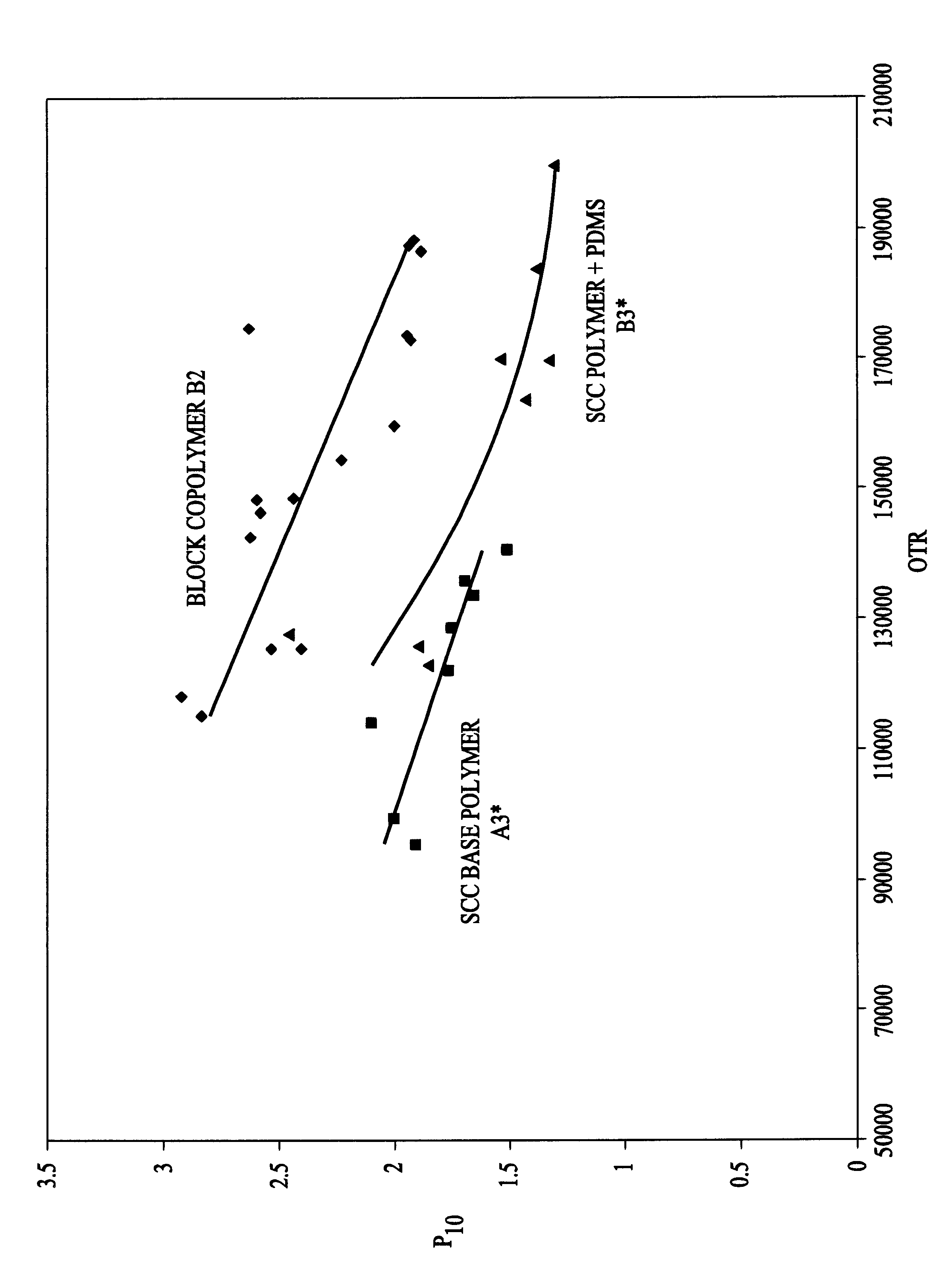Packaging biological materials
a biological material and packaging technology, applied in the field of packaging biological materials, can solve the problems of unsatisfactory packaging atmosphere of conventional polymeric films, inability to provide satisfactory packaging atmospheres when used on their own, and the size and the area of the members made of microporous films is not good
- Summary
- Abstract
- Description
- Claims
- Application Information
AI Technical Summary
Benefits of technology
Problems solved by technology
Method used
Image
Examples
examples a1 -
Examples A1-A7 show the preparation of SCC polymers. Examples A1-A5 show the preparation of SCC polymers which are subsequently reacted with a polysiloxane to form a block copolymer. Examples A6 and A7 show the direct preparation of SCC / siloxane block copolymers through the use of a polysiloxane which is terminated at one end with an unsaturated group which will copolymerize with the acrylate monomers. SCC polymers having the M.sub.w, M.sub.n, T.sub.p and .DELTA.H values shown in Table 1 were prepared using the monomers, solvents and initiators, and amounts thereof (in parts by weight) shown in Table 1. In a first phase, the monomers, and the solvents and initiators shown for the first phase, were maintained at the temperature and for the time shown in Table 1 for the first phase. In Examples 2 and 4, the heptane was added 2 hours after the heating of the first phase had commenced. In a second phase, polymerization was completed by adding the initiators shown in Table 1 for the seco...
example b1-b6
In Examples B1, B2, B4, B5 and B6, SCC / siloxane block copolymers were prepared using one of the SCC polymers prepared in Examples A2 to A5 and a polysiloxane, in the amounts (in parts by weight) shown in Table 2. In Example B1, the reaction was carried out in butyl acetate (260 parts by weight), and the reaction mixture was heated under reflux at 110.degree. C. for 6 hours. Similar reaction conditions were employed in Examples B2-B5. In Example B6, the SCC polymer (A5) was diluted to 4% solids, and the polysiloxane (ADMS) was then added). The resulting mixture was immediately applied to the substrate using a gravure coating cylinder as described below, and reaction between the SCC and siloxane polymers took place on the substrate. In Example B3, the SCC polymer and the polysiloxane were merely blended together, and no reaction took place between them.
PUM
| Property | Measurement | Unit |
|---|---|---|
| Fraction | aaaaa | aaaaa |
| Linear density | aaaaa | aaaaa |
| Linear density | aaaaa | aaaaa |
Abstract
Description
Claims
Application Information
 Login to View More
Login to View More - R&D
- Intellectual Property
- Life Sciences
- Materials
- Tech Scout
- Unparalleled Data Quality
- Higher Quality Content
- 60% Fewer Hallucinations
Browse by: Latest US Patents, China's latest patents, Technical Efficacy Thesaurus, Application Domain, Technology Topic, Popular Technical Reports.
© 2025 PatSnap. All rights reserved.Legal|Privacy policy|Modern Slavery Act Transparency Statement|Sitemap|About US| Contact US: help@patsnap.com


